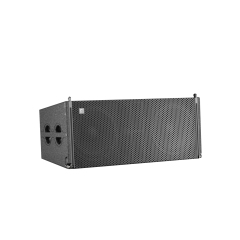It is vital to evaluate the specifications, features and factors of an outdoor waterproof speaker; so you could select one that would last longer. IP Rating — The first thing to look at is the IP rating of a speaker, which tells you how much dust and water input your sound-emitting techy can handle. An installation with an IP67 rating, for example, means that the system is completely dustproof and resistant to water immersion up to one meter deep for 30 minutes. This degree of protection is essential if the speakers are to be used around rain or touch on a case by mistake, as can happen very easily in environments such as poolside gatherings and other beachfront events where getting splashed with water is all but an inevitability.
Another important consideration is power output. Outdoor spaces need louder speakers; it has to rival the noise coming from INSIDE a theatre, while indoors one of their absorbers gives them that same effect as if wood was ALSO dead silent. Powerful 100-watt per channel amplifier in a sturdy, compact platform — audio will be loud and pristine even outdoors. When it comes to the big outdoor events, power capacity requirements can be upwards of 300 watts per channel in order for you to push and drop signals over a certain threshold at greater distances without causing lost quality. Take the 30 watts of output power in a JBL Charge 4, for example — it produces solid audio and has become best-seller among folks looking to fill up smaller outdoor gatherings.
It is not only water-resistant; this kaleidoscope will last. Similarly, outdoor speaker systems must come with at least partial UV resistance if they are going to spend much time in direct sunlight. UV exposure over time can degrade materials and cause cracks or fading. UV-resistant housings, like those made of ABS plastic or a coated metal can significantly extend the lifespan of your speakers when subject to harsh sunlight. The Bose FreeSpace 51 —an outdoor-oriented speaker— uses UV-resistant materials, boasting an extra couple of years over most non-specialist speakers.
Furthermore, selecting a waterproof outdoor speaker system entails various factors such as battery life. The playback time of 10 hours on a single charge facility should be available in portable systems to manage the continue event through day long without any worries. Premium options like the Ultimate Ears MEGABOOM 3 will see you through an entire day (or night) of use, keeping pumping out songs at outdoor weddings and corporate retreats, with up to a whopping 20 hours battery life.

Bluetooth range and compatibility across a variety of devices are also important factors to be considered in case you wish for seamless audio streaming when out on the trails. At a minimum, you should be looking for 30 meters of range as that will help prevent dropouts when using in larger outdoor spaces where the audio source may not always be right next to your speakers. Meanwhile, models with aptX capability have among the best Bluetooth sound quality available (again longitudes are less significant).
The other important aspect is Cost and Budget considerations No outdoor speaker is waterproof and range in price from around $100 for a basic system to more than 1,000 dollars for high end systems so the sky really is the limit here. The investment should be in line with what the world enables. As an example, the $400 high-end Sonos Move delivers exceptional audio quality and durability with built-in smarts that make it perfect for regular outdoor use.
These factors can be illustrated by way of industry examples. The famously changeable weather at Glastonbury has seen the organisers of the festival, held once again this bank holiday weekend and ranked as one of Europe's biggest live music events, opt for high IP-rated speaker systems based not in their technical requirements but simply to ensure that equipment doesn't fail if it gets wet. And it has saved them from thousands of dollars in damaged equipment and lost shows — proving the worth of some investments into weatherproof systems.
Despite your intentions of making use in the outdoors, audio quality remains a non-negotiable selection criterion for any waterproof outdoor speaker system. In the case of a balanced sound that can drown out outdoor noise, you want crisp highs along with clear mids and deep bass. Frequency Response Range: The Frequency response range, usually measured in Hertz (Hz), tells you how accurately the system can drive all frequencies of sound. A frequency range of 20 Hz to 20,000 Hz covers the bandwidth between low bass tones and high treble notes so that players get an even tone. The Klipsch AW-650 is best in the world and perfect for audiophiles with a frequency response of 70 Hz to 20,000 Hz producing clear powerful sound.
Last but not least, portability and simplicity in setting up can really make or break user experience. These indoor/outdoor speakers are much lighter, have built-in handles that make them easier to move and install in different outdoor spots on your property. Today, the market has a variety of waterproof outdoor speaker system for different purposes — from small portable units to pretty massive and high-powered ones designed especially for installing them permanently.
